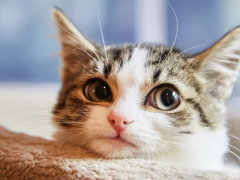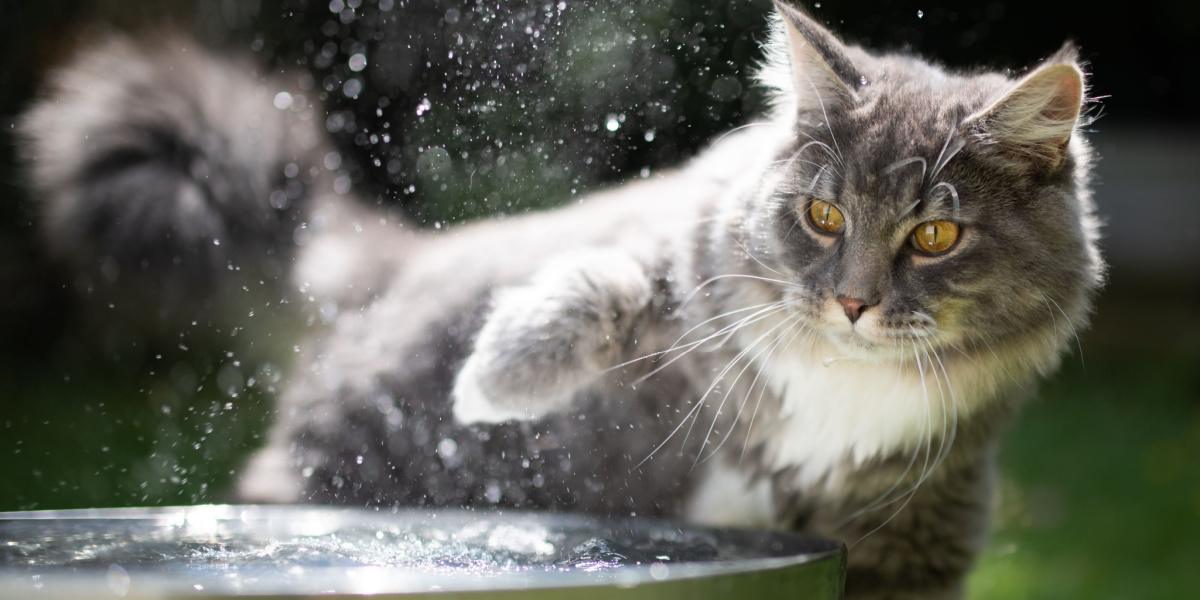
You wouldn’t compare your cat to a duck. Cats won’t venture outside if there is the merest hint of rain in the air, daintily step around any puddles on the ground, and forget about trying to give them a bath!
All cat species have webbed feet; domestic cats feet are partially webbed. Webbed feet help cats to be agile on all kinds of surfaces including muddy ground, allow them to be super stealthy when hunting, and help them out if they need to swim. Inspect your cat's feet regularly in case they ever develop an issue such as a wound or infection.Key Takeaways
Cats have a reputation for hating water, so it may come as some surprise to many cat owners that domestic cats have webbed feet! Yes, if you look at your cat’s paw, each of those little toes are partially attached to the next one. Domestic cat feet are classed as “partially webbed” as the trait is not as strong as in aquatic creatures such as ducks or frogs.
But why do cats have this strange trait? It’s actually thought to be a throwback from their big cat cousins, as toe webbing is helpful in predatory species such as cats who live near water.
Webbing is present in both genders of cats, and all breeds. It helps them to be agile on all kinds of surfaces including muddy ground, allows them to be super stealthy when hunting, and helps them out if they do need to swim.
Why Do Cats Need Webbed Feet?
Cats are not aquatic mammals, but they are very well designed to be the perfect hunter, taking advantage of all sorts of anatomical and physiological tricks to ensure they have all the advantages they need—even when it comes down to those cute feline toes!
1. Hunting
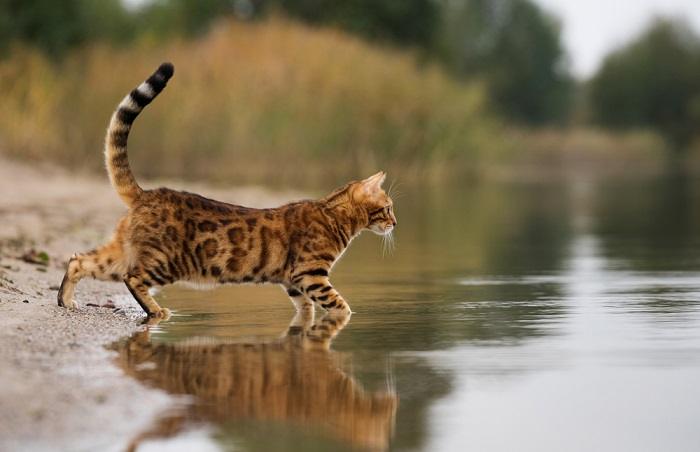
Partially webbed feet helps cats hunt across wet terrain, including mud and watery surfaces.
Cats are obligate carnivores, and in the wild, their survival would depend on their ability to hunt smaller prey. They have multiple adaptions to allow for the best chance of success.
Their paw pads (otherwise known as toe beans!) and soft and padded, acting as a form of shock absorber, reducing strain on the bones and tendons when they jump and pounce. Retractable claws are sharp and deadly, allowing excellent grip on whatever they catch.
Partially webbed feet give a larger surface for their body weight to be spread across, allowing stealthy movement across all terrain including mud and watery surfaces. The webbing ensures cats don’t sink into muddy or boggy ground if they need to suddenly stop while hunting—or hiding from a predator themselves.
Also Read: How Do Cats Hunt?
2. Agility
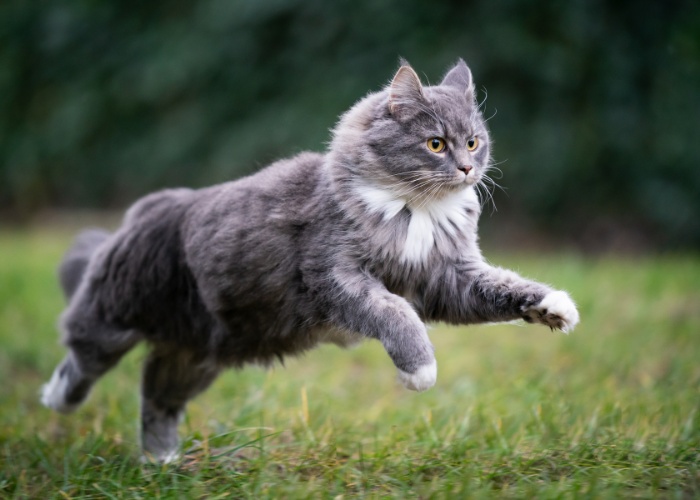
Webbed feet help cats roam and explore in different environments, including those with water crossings, muddy areas, and swamps or bogs.
Cats are graceful animals, able to move soundlessly, stalk, pounce, and jump with ease and agility. Their bodies are naturally athletic, with long legs for their body size and a streamlined silhouette.
Webbed feet also contribute to this natural ability, meaning any kind of cat is free to explore across any terrain. They can cross water, explore muddy areas, and even live in swamps or bogs. This opens up options for our cats to move longer distances looking for territory, food, and potential mates. It also adds speed to their talents if a large predator is spotted.
Also Read: How Do Cats Mark Their Territory?
3. Swimming

It might not be their favorite activity, but cats can swim well thanks in part to their webbed feet.
The cat species is found all over the world, living in a huge variety of environments, terrains, weather, and conditions. There are cats that live in muddy, swampy, and watery conditions, to whom swimming and the ability to make their way over wetland is vital.
Some cats might not like water very much, but their swimming capabilities are indeed present. The webbed nature of their feet increases the surface area pushing against the water as they swim, making them more efficient, faster, and able to travel longer distances.
Also Read: Can Cats Swim?
Do All Cats Have Webbed Feet?

All cats, big and small, have webbed feet, though domestic cats’ feet are only partially webbed.
Yes, all species of the Felis genus have some degree of webbing to their feet. Some, like our domestic felines, are only partially webbed and are mainly found on land. Some species are more water-based than others and can be skilled swimmers.
The Sumatran tiger is an example of a big cat species with almost fully webbed feet. Living on islands in Indonesia, they are well adapted for their environment. The Bengal tiger, living alongside the Ganges river in India in wet forest land, is another big cat that benefits hugely from this foot adaptation.
The jaguar also loves to swim, hunting fish and turtles as part of their diet. Their webbed feet mean that they are as fast and graceful in the water as they are on land.
The flat-headed cat, found in Southeast Asia, has webbed feet and a strange-looking head that is very streamlined for swimming, with their natural habitat being swamps and wet peat forests. There is even a species called the fishing cat!
Also Read: 15 Little-Known Facts About Big Cats
Webbed Feet In Domestic Cats

Many cats dislike water, including baths, but some breeds actually love getting wet!
All domestic cat breeds have partial webbing to their feet. If you examine your cat’s feet, between the toe tufts and paw pads, look for the little space between the toes to see the thin skin attaching each toe to the next. This webbing is easier to see in hairless breeds such as the Ukrainian Levkoy, and in Sphynx cats, in which it is also highlighted by their long toes.
There are some cat breeds that prefer swimming to others. Bengal cats are known for their love of water, with many stories of them trying to get into a bath or shower with their owners. The Bengal breed is related to the Asian leopard cat, a small wild cat species that is famed for its hunting abilities in the water.
Maine Coon cats are also rumored to love water. This longhaired cat breed uses its thick fur as insulation in the water, meaning they are more resistant to cold. As an extra interesting fact, Maine Coon cats are also prone to polydactylism, an inherited condition caused by an autosomal dominant gene that gives them one or more extra toes. Polydactyl cats can have a varied number of extra digits, and they can be either on the front paws or hind, or both.
Also Read: 150 Best Polydactyl Cat Names: Unique Ideas For Cats With Extra Toes
How Do I Care For My Cat’s Webbed Feet?
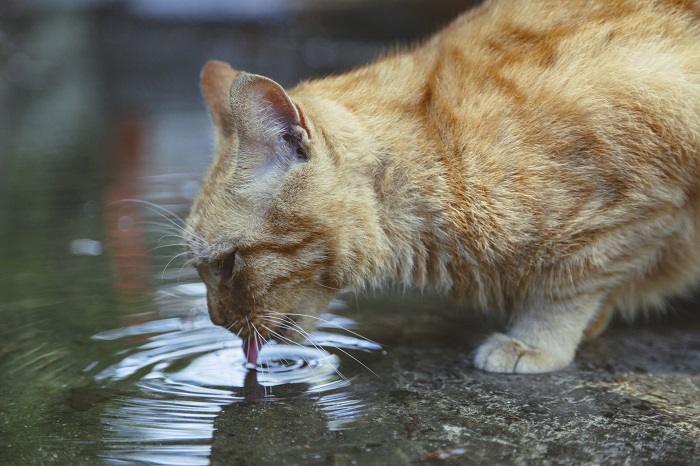
Your cat’s webbed toes don’t require any special care.
Cat paws can be sensitive, and many cats are not very fond of having their toes inspected. There is no specific reason that having webbed feet will cause any problems.
However, getting into a routine of accustoming your cat to having their feet inspected is handy if they ever do develop an issue such as a wound or infection. Keep longhaired paws tidy to prevent the hair from matting, check for cuts or sore patches, and keep nails trimmed if needed.
If you notice that your cat is chewing or licking at their feet or not walking well, take them to the vet for a checkup.
Also Read: Do Cats Have Scent Glands In Their Paws?
Final Thoughts

It turns out that cats are more adapted to aquatic life than we might have thought. Domestic cats have partially webbed feet, useful for traversing all types of terrain, speed, agility, and even swimming if necessary. This still doesn’t mean that they will like the bath, though!
Also Read: 7 Similarities Between Domesticated Cats And Big Cats
Frequently Asked Questions
Do any cats have webbed feet?
Yes, all cats have some degree of webbed feet. All domestic breeds of cats have partially webbed feet, with some big cats having more full webbing.
What breeds of cats have webbed feet?
All domestic cats have partially webbed feet. It is easier to see the webbing on hairless breeds such as the Sphynx, but all cat breeds have it.
Is it normal for cats to have webbed toes?
Yes, all cats have webbed toes. It helps them to travel across all terrains, including mud and boggy land, and to swim if necessary.
Why do Maine Coons have webbed feet?
All domestic cats have partially webbed feet. Maine Coons, with their thick insulating fur, are well adapted for swimming and their webbed toes help them swim efficiently and for longer distances.







